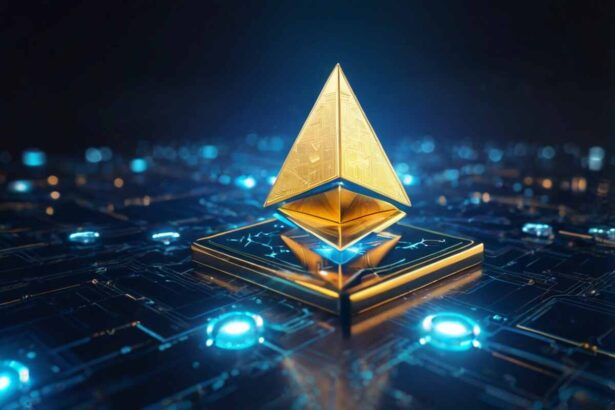These one-of-a-kind digital items, securely stored on a blockchain have captured attention due to their ability to represent anything from artwork to real estate in the form of verifiable tokens. However, NFTs offer more than proof of ownership and transferability. With the introduction of token standards like ERC 6551, the capabilities and future potential of NFTs are expanding.
- How Does ERC-6551 Differ From ERC-721?
- Advantages Of ERC-6551 In NFTs
- Functionality like Smart Contract Wallets
- Better Interactivity for NFTs
- Introduction of TBAs
- Cross Chain Compatibility
- New Use Cases for NFTs
- Better Security Through Token Restrictions
- Real-World Use Cases And Examples Of ERC-6551 In Action
- Let Us Explore Some Real-Life Scenarios Where the ERC-6551 Standard Can be Put Into Action
- Following are Some Examples of NFT Projects That Have Used ERC-6551
- Sapienz
- The Managers
- CloneX and Doodles
- Challenges Related To ERC 6551
- The Future Prospects And Adoption Of ERC-6551 In The NFT Ecosystem
- Conclusion
ERC-6551 is a token standard designed specifically for non-fungible tokens (NFTs). This standard enables each NFT to possess its unique on-chain identity within the blockchain ecosystem and facilitates interactions, with smart contracts. Under this standard, every ERC 721 token (another type of NFT) is associated with its own smart contract known as a “token-bound account.” To put it simply ERC 6551 empowers individual NFTs to function as self-contained “Web3 wallets.”
How Does ERC-6551 Differ From ERC-721?
ERC 6551 differs from ERC 721 in that it enables the creation of contract accounts for each ERC 721 token, which leads to token-bound accounts (TBAs). TBAs allow NFTs to possess assets engage with contracts and have their distinct, on-chain identity. Furthermore, ERC 6551 utilizes a permissionless registry that’s compatible with blockchain platforms enabling NFTs to interact with different blockchain ecosystems.
Moreover, TBAs have the ability to incorporate rules that dictate the requirements, for receiving Ether while also following established Ethereum protocols. These protocols ensure a TBA interface. Grant execution permissions exclusively, to owner accounts. On the other hand, ERC 721 NFTs can only be transferred without any capacity to own assets interact with smart contracts adapt according to external factors, or respond to user inputs.
Advantages Of ERC-6551 In NFTs
Functionality like Smart Contract Wallets
Just like smart contract wallets, ERC 6551 tokens can hold similar functions. These functions can include holding tokens and other NFTs.
Better Interactivity for NFTs
With ERC 6551, NFTs have the ability to own assets and interact with applications. This elevates their interactivity and dynamism. The adoption and usage of NFTs are expected to increase due to these capabilities.
Introduction of TBAs
The token-bound accounts that are linked to particular NFTs under ERC 6551, combine tokens, assets, and NFTs into a single account. This integration allows users to easily switch between platforms and transfer assets. This in turn results in a better user interface.
Cross Chain Compatibility
The ERC-6551 standard is designed to be compatible with other blockchains, thus facilitating interaction with various decentralized applications (dApps) and smart contracts.
New Use Cases for NFTs
The introduction of ERC 6551 opens up possibilities for using NFTs in different ways such as representing digital assets within the metaverse or incorporating in-game items within gaming applications.
Better Security Through Token Restrictions
Token-bound accounts allow tokens to be locked exclusively to accounts, enhancing security measures. The tokens are designed to be used under parameters set by the issuer. This helps in ensuring that the tokens are used as intended.
Real-World Use Cases And Examples Of ERC-6551 In Action
Let Us Explore Some Real-Life Scenarios Where the ERC-6551 Standard Can be Put Into Action
- Gaming- The ERC 6551 enhances gaming experiences by allowing players to use NFTs for in-game events, player actions, or real-world factors.
- Asset management- Managing assets can be challenging when dealing with distinct NFTs. However, by combing all assets, including those, from games into a token-bound account it becomes easier to oversee them. For example, one can categorize NFTs based on the game they belong to or group deck NFTs based on the characteristics of each card.
- Linking with benefits- Instead of simply selling NFTs on their own it is possible to add various benefits to them. Not only can NFTs be linked with other NFTs but native tokens like ERC 20 and ETH can also be incorporated. As an illustration, an NFT membership card could be created that offers content or provides exclusive deals for the first purchasers using ETH.
Following are Some Examples of NFT Projects That Have Used ERC-6551
Sapienz
The Sapienz project demonstrates the improved non-fungibility of NFTs. Multiple NFTs can be added to a main NFT’s token-bound account and it can be converted into different wearables and backgrounds.
The Managers
The Managers NFT project employs the ERC-6551 standard to enable NFTs to own other NFTs, participate in DeFi applications, and interact with smart contracts.
CloneX and Doodles
CloneX and Doodles are projects that focus on PFP collectibles and can take advantage of the increased utility of their NFTs by rewarding holders with token-bound accounts. They can airdrop incentives and rewards directly to holders in their collection, incentivizing engagement and loyalty even further.
Challenges Related To ERC 6551
Since ERC 6551 is a standard it faces some challenges:
Limited Support & Integration Complexity
Not all wallets and exchanges currently support ERC 6551. This means that users looking to utilize ERC 6551 tokens may need to rely on wallets or exchanges that have implemented this standard. This can pose difficulties, for existing crypto and web3 projects in their transition to this token standard.
Security Concerns
Due to its novelty and limited testing there are risks, errors, and security vulnerabilities associated with this standard.
Despite these challenges, ERC 6551 holds the potential to revolutionize the NFT industry by introducing interactive features for NFTs. Additionally, it empowers ERC 721 NFTs with the capabilities of an Ethereum account, through token-bound accounts. As the crypto community continues to explore and innovate with this token standard we can anticipate enhancements and exciting use cases emerging in the future.
The Future Prospects And Adoption Of ERC-6551 In The NFT Ecosystem
As NFTs evolve and new use cases emerge, ERC-6551 offers exciting opportunities for creators, collectors, and investors. However, it is important to acknowledge that there may be challenges to overcome including the technical complexity and compatibility with existing technology. Like any technology, ERC 6551 will require time to gain adoption and for developers, creators, and users to fully engage with this new standard. Nevertheless, its potential to transform the NFT landscape is undeniable.
An interesting possibility is: that NFTs can become more interactive by allowing changes and evolutions over time. By utilizing smart contracts NFTs could possess properties that are adaptable based on specific conditions or triggers. Additionally, we may see an integration between NFTs and augmented reality technologies resulting in a more immersive experience for users. Furthermore, various industries such as estate, finance, and even voting systems could find applications, for NFTs.
In general, ERC 6551 represents a progression, in the realm of NFTs. It enables NFTs to operate as their contract accounts thereby introducing a wide array of fresh possibilities and functionalities.
Conclusion
In conclusion, ERC 6551 serves as an upgrade for NFTs that enhances their dynamism, interactivity, and versatility. This novel standard empowers NFTs to possess assets collaborate with contracts and engage with blockchain platforms. Although it is still early in its development ERC 6551 brings forth prospects for NFTs. As more individuals gain an understanding of the potential of NFTs they are becoming increasingly popular and valuable across industries and aspects of our lives. This is indeed an exciting time, for the world of NFTs!




















